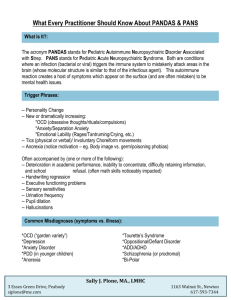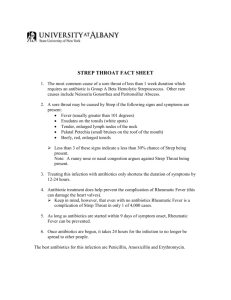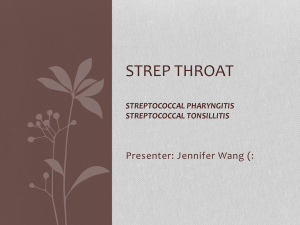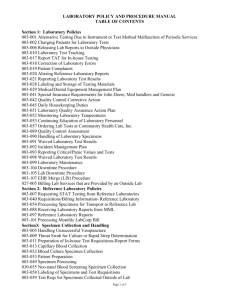STREP - CORDIS
advertisement
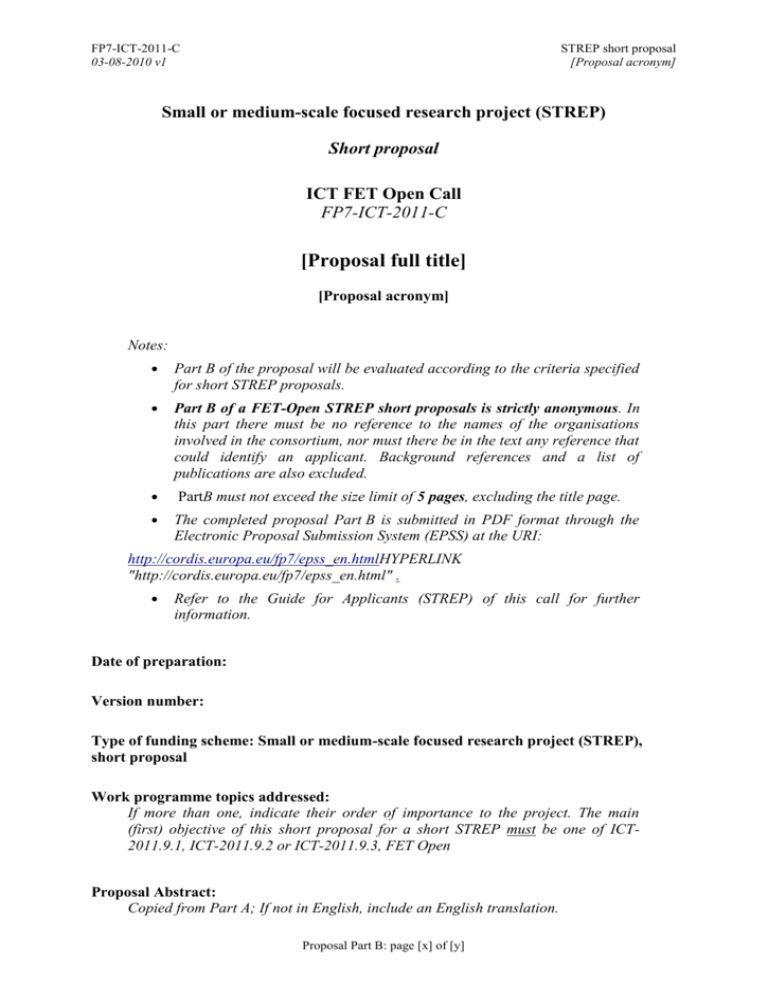
FP7-ICT-2011-C 03-08-2010 v1 STREP short proposal [Proposal acronym] Small or medium-scale focused research project (STREP) Short proposal ICT FET Open Call FP7-ICT-2011-C [Proposal full title] [Proposal acronym] Notes: ● Part B of the proposal will be evaluated according to the criteria specified for short STREP proposals. ● Part B of a FET-Open STREP short proposals is strictly anonymous. In this part there must be no reference to the names of the organisations involved in the consortium, nor must there be in the text any reference that could identify an applicant. Background references and a list of publications are also excluded. ● ● traPB must not exceed the size limit of 5 pages, excluding the title page. The completed proposal Part B is submitted in PDF format through the Electronic Proposal Submission System (EPSS) at the URI: http://cordis.europa.eu/fp7/epss_en.htmlHYPERLINK "http://cordis.europa.eu/fp7/epss_en.html" . ● Refer to the Guide for Applicants (STREP) of this call for further information. Date of preparation: Version number: Type of funding scheme: Small or medium-scale focused research project (STREP), short proposal Work programme topics addressed: If more than one, indicate their order of importance to the project. The main (first) objective of this short proposal for a short STREP must be one of ICT2011.9.1, ICT-2011.9.2 or ICT-2011.9.3, FET Open Proposal Abstract: Copied from Part A; If not in English, include an English translation. Proposal Part B: page [x] of [y] FP7-ICT-2011-C 03-08-2010 v1 STREP short proposal [Proposal acronym] Proposal Section 1: Scientific and/or technical quality, relevant to the topics addressed by the call “FET-Open targets foundational breakthroughs that open the way towards radically new forms and uses of information and information technologies. It flexibly accommodates the exploration of new and alternative ideas, concepts or paradigms that, because of their radical, fragile or high-risk nature, may not be supported elsewhere in the ICT Workprogramme. Research under FET-Open is aimed at achieving a first proof-ofconcept and at developing its supporting scientific foundation. The novelty of this research comes from new ideas rather than from the refinement of current ICT approaches” 1.1 Targeted breakthrough and its relevance towards a long-term vision Describe the breakthrough(s) that you are targeting to achieve. What is the long-term vision (scientific, technological, societal, other) that motivates this breakthrough? Explain how this breakthrough is an essential step towards the achievement of your long-term vision, in particular in terms of new forms and uses of information and information technologies. Describe the concrete objectives that you would consider to constitute the proof-of-concept of such a breakthrough. The objectives should be those that you consider achievable within the project, in spite of the inherent risks. 1.2 Novelty and foundational character What is the novelty of your proposal? In what way do you challenge current thinking or assumptions? Novelty should come from new ideas, not from the incremental refinement of existing approaches. It can also come from new and unexpected combinations of insights from various disciplines. What is the scientific foundation that you aim to develop? 1.3 S/T methodology Provide an outline of the scientific and technological approach or methodology by which you will attempt to reach your objectives. Provide evidence that you are aware of the level and nature of the risks of failure, and that you have a good idea on how to address these risks. What would constitute success? What would you learn from an eventual failure? Where relevant, show how your approach is well-adapted to the multidisciplinary nature of the novel idea or approach that you are proposing. Maximum length for Section 1 – five pages Proposal Part B: page [x] of [y]

